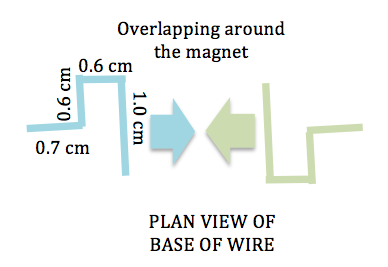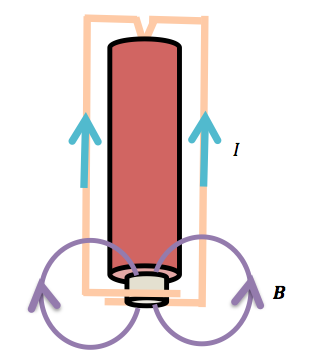The force acting on a current-carrying conductor is given by
Materials
- An electronic weighing scale
- Two neodymium magnets
- Plasticine
- Batteries
- 40 cm long wire
Procedure
- Place some plasticine between two neodymium magnets to hold them together with each magnet having a different pole facing up (north for one and south for the other).
- Place the magnets on the weighing scale.
- Connect the 40 cm wire across the opposite terminals of the batteries.
- Hold the wire horizontally and place it between the two magnets so that the current runs perpendicularly to the magnetic field lines.
- Using Fleming’s left-hand rule, one can predict whether the measured weight will increase or decrease. If the magnetic force acting on the wire is upward, by Newton’s 3rd law, the reaction force acting on the magnets is downward and the measured weight will increase, and vice versa.
- Flipping the current around in the opposite direction will yield opposite results.




